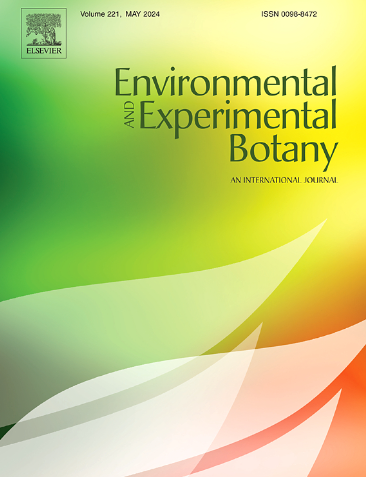繁殖马尾藻对增加光照和氮水平的生理反应
IF 4.7
2区 生物学
Q2 ENVIRONMENTAL SCIENCES
引用次数: 0
摘要
马尾藻金潮造成了严重的生态影响,海水富营养化被认为是引发马尾藻金潮的主要原因。为探讨金潮物种繁殖性角藻(S. horneri)对光照和氮水平升高的生理反应,本研究设置了2种光照强度(LL和HL)和2种硝酸盐浓度(LN和HN)。双因子互作试验结果表明,光和硝态氮对繁殖性角藻光合作用有交互作用。在LN处理下,高光引起的光抑制显著,表现为最大光化学量子产率(Fv/Fm)和光合速率降低,非光化学猝灭(NPQ)增强,Chla和Chlc含量降低。HL处理下,HN显著缓解了这种光抑制作用,甚至表现出更高的光合速率,Chla和Chlc含量均有所升高。HN处理中Car和uv吸收化合物(UVACs)含量、电子传递效率(α)和暗呼吸速率的增加可能有助于保护和修复光损伤。此外,HL和HN处理显著提高了藻类枝和托中的C和N含量。HLHN处理显著提高了初培养时的相对生长率(RGR),增加了繁殖托的数量和繁殖力。基于这些发现,我们推测在富营养化条件下,生殖型霍氏梭菌在脱离并漂浮到海面后,更有可能在适应强光条件后保持快速生长繁殖并形成金潮。本文章由计算机程序翻译,如有差异,请以英文原文为准。
Physiological responses of reproductive Sargassum horneri to increased light and nitrogen levels
The Sargassum golden tide has resulted in severe ecological impacts, and the eutrophication of seawater is considered as a major trigger for it. To explore the physiological responses of reproductive S. horneri, a golden tide species, to increased light and nitrogen levels, two light intensities (LL and HL) and two nitrate concentrations (LN and HN) were set in this study. The results of two-factor interaction experiment showed that light and nitrate interactively influenced the photosynthesis of reproductive S. horneri. In LN treatment, a significant photoinhibition caused by high light was found, reflected by decreased maximum photochemical quantum yield (Fv/Fm) and photosynthetic rate, enhanced non-photochemical quenching (NPQ), and reduced Chla and Chlc contents. However, the HN culture remarkably alleviated such photoinhibition, even exhibited a higher photosynthetic rate in HL treatment, with the elevated Chla and Chlc contents. The increments of Car and ultraviolet-absorbing compounds (UVACs) contents, electron transport efficiency (α), and dark respiration rate in HN treatment may contribute to protecting and repairing the photodamage. Additionally, HL and HN treatments significantly increased the C and N contents in the branches and receptacles of alga. The HLHN treatment significantly enhanced the relative growth rate (RGR) at initial culture, and increased the number of reproductive receptacle and reproductive effort. Based on these findings, we hypothesize that under eutrophic conditions, reproductive S. horneri, after detachment and floating to the sea surface, is more likely to maintain rapid growth and reproduction and form golden tide after adapting to high light conditions.
求助全文
通过发布文献求助,成功后即可免费获取论文全文。
去求助
来源期刊

Environmental and Experimental Botany
环境科学-环境科学
CiteScore
9.30
自引率
5.30%
发文量
342
审稿时长
26 days
期刊介绍:
Environmental and Experimental Botany (EEB) publishes research papers on the physical, chemical, biological, molecular mechanisms and processes involved in the responses of plants to their environment.
In addition to research papers, the journal includes review articles. Submission is in agreement with the Editors-in-Chief.
The Journal also publishes special issues which are built by invited guest editors and are related to the main themes of EEB.
The areas covered by the Journal include:
(1) Responses of plants to heavy metals and pollutants
(2) Plant/water interactions (salinity, drought, flooding)
(3) Responses of plants to radiations ranging from UV-B to infrared
(4) Plant/atmosphere relations (ozone, CO2 , temperature)
(5) Global change impacts on plant ecophysiology
(6) Biotic interactions involving environmental factors.
 求助内容:
求助内容: 应助结果提醒方式:
应助结果提醒方式:


